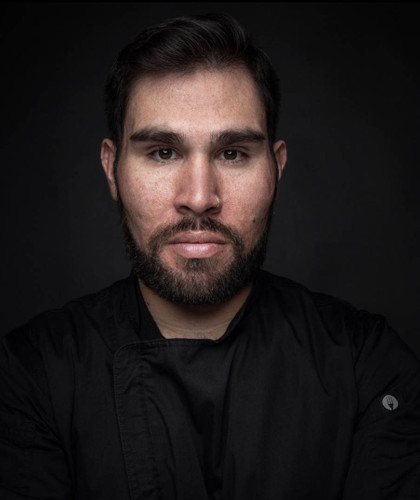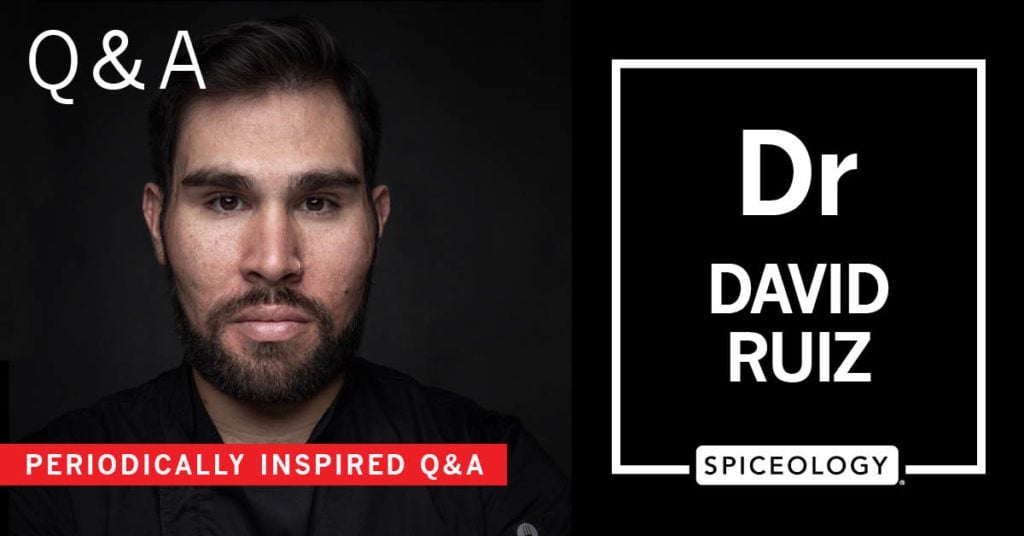
Chef David Ruiz might call the Land of Mañana home, but you won’t ever find him procrastinating. He’s ideating. He’s experimenting. He’s fermenting. He’s cooking.
David’s been on Chopped, was named a winner in the James Beard Foundation’s Blended Burger Project and ad hoc teaches at a local culinary school. These days you can find the chef busier than ever as Albuquerque emerges from pandemic restaurant restrictions. He just opened Curious Toast Cafe and is building out a new dining program at Vara Winery.
We talked with David for Spiceology’s Periodically Inspired interview series that dives deep into a chef’s delicious creativity – read the full interview and get to know David below:
People around you, music, books, travel – where do you find inspiration when you create new dishes?
“Inspiration comes from anywhere and everywhere. Last summer my girlfriend kept listening to ‘Watermelon Sugar’ by Harry Styles. I heard it so much that I wanted to make a summer-inspired dish to pay homage to the song. Once I decide on my main ingredient, I start listing out what would pair well with it in my notebook. I look at the science behind the ingredient – what makes a watermelon a watermelon. I explore how I can manipulate the ingredients to make them do what I want them to do. Then I source local ingredients and start to go for it. Every dish evolves over multiple tries – from overall taste to plating.”
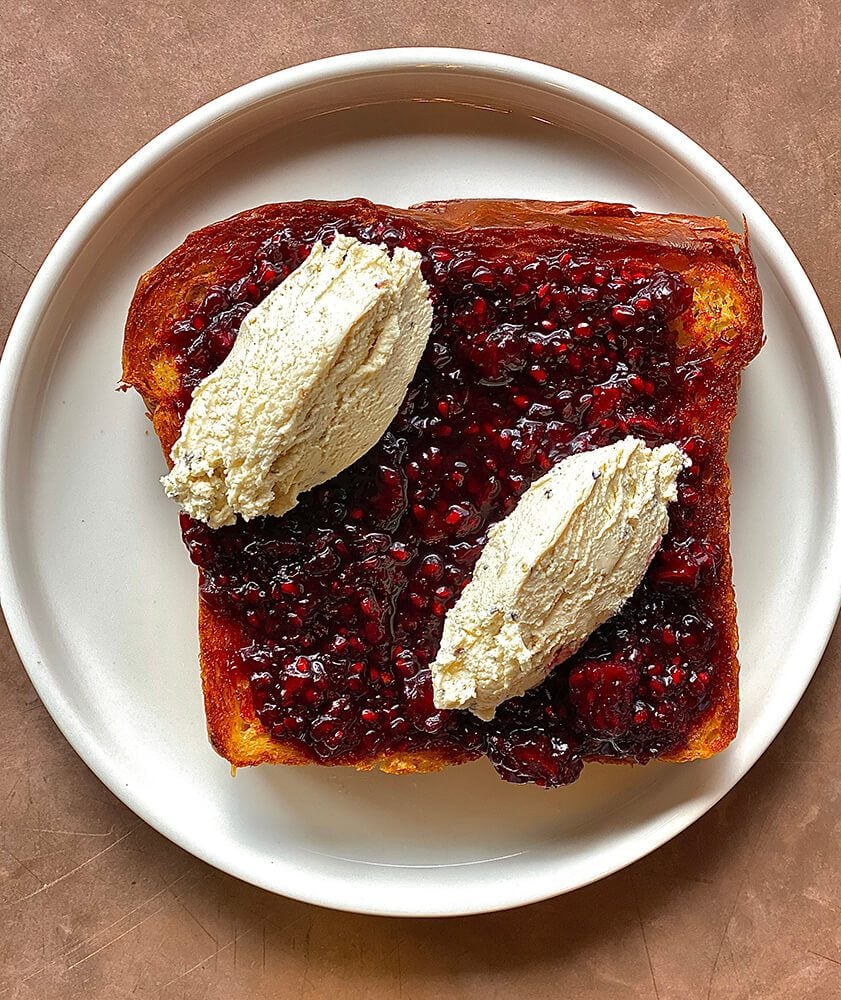
When did you first find a love of cooking?
“My Mom is white and Jewish, and my Dad is Mexican Catholic – so growing up, food brought everyone together. My parents taught me to respect the land and they shopped at local farmer’s markets – my Mom would can and jar; I spent summers on my grandmother’s farm where she had avocado trees, livestock and we grew produce and chiles. Being in Gilroy, CA, we had garlic at our disposal, but we could also hop over to Watsonville to pick berries – the area was amazing. As a kid I grew up with farm-to-table meals before I even knew that was a thing. My family were home chefs, and I loved seeing them manipulate the local food. As I got older, cooking was the only thing I was interested in.”
What’s your dish ideation and creation process?
“I keep a notebook next to my nightstand because I dream in food; at least a third of my dishes are from my dreams. My team will eventually join in the process, and you get to a point where ideas come collaboratively. Everyone’s creative process is different, and if I’m dictating to them that doesn’t help. I want my staff to bring ideas and take responsibility – cost out the ingredients, research the history, dive into the scientific background, and explore how we can manipulate the ingredients and ultimately make the dish.”
How do you approach plating a dish? Do you consider plating an art?
“Plating is absolutely an art and the thing I enjoy most about cooking. It’s like going to a museum and looking at art. I often went to SFMOMA as a kid, and art makes you feel something – and that’s what I’m trying to capture. It’s like that moment in Ratatouille – that moment Anton Ego drops the pen and it’s a sensory memory. I’m trying to capture those moments in my food; I want to make people feel something and give them an experience unlike any other. People eat with their eyes, so my plating is a process. It always varies and depends on the main ingredient, but I actively look to manipulate each ingredient naturally and make things look dimensional. Every design element and ingredient on the plate has a purpose.”
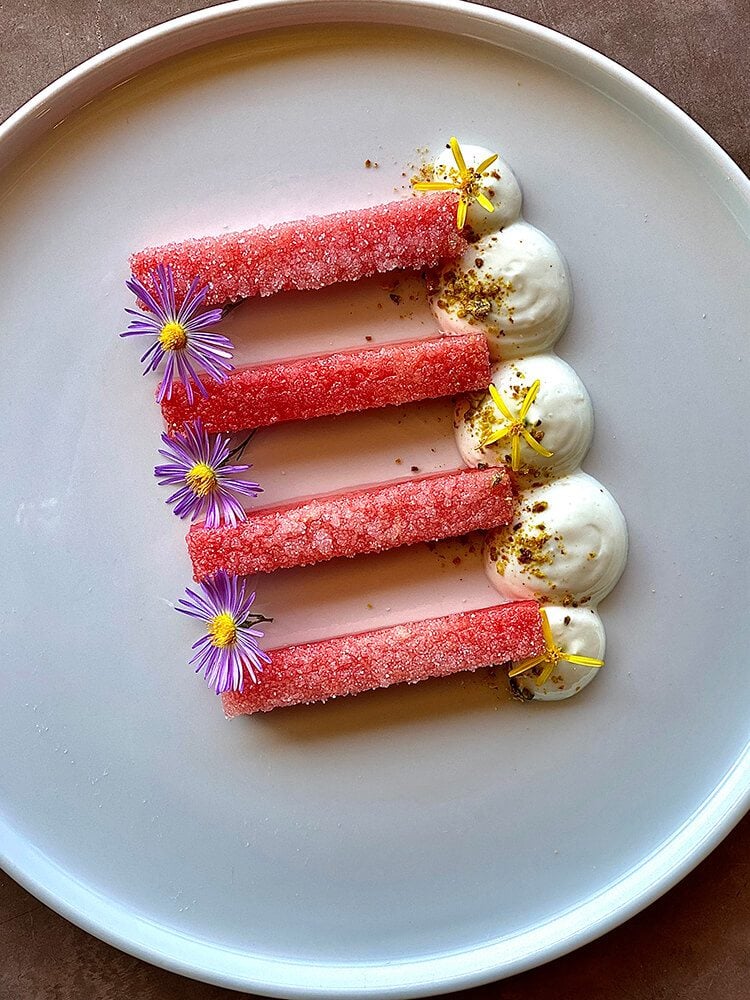
Where are places you visit or what are things you do if you’re ever in a creative block?
“I go to Seattle, I love the PNW and would happily live there because every time I go I’m inspired. Portland and Seattle are on the forefront of pushing culinary boundaries. It’s also incredibly fertile there, so you have amazing produce to work with. I also travel to Dallas, it’s full of every type of cuisine and the chefs there are doing incredible things. Austin is also weird and wonderful and pushes great food. Then the classic – going to New York. It’s a city I would never want to live in, but I love to immerse myself there. I research restaurants and just eat and always get inspired.”
What advice would you give a chef still in culinary school?
“You don’t need to go to culinary school. Go work in a restaurant and wash dishes before you decide to be a chef. If you can’t fall in love with the nitty gritty of the culinary world – you’ll never love being a chef. And if you’re not willing to do everything from the ground up – this will not be for you. Also, READ! Collect and read cookbooks. Students see Top Chef and Food Network and that’s just not the standard. It took me 10 years to become an Executive Chef because I wanted to know the history of food. Cookbooks were the way I learned. Young culinarians need to know the history of food; I just bought Ferran Adria’s The Origins of Cooking. And finally, find the chef you want to work with in your city and work for free. TRAVEL. LEAVE. Go be uncomfortable. FAIL. FAIL. You need to fail and learn from it.”
How do you experiment with flavor?
“First, I need to learn the genesis of the ingredient or concept I have in mind. I buy a book, find an expert or lean on people around me. Flavor is about research. I use The Flavor Bible, and I might write out 40-50 dishes to start seeing what works. At some point, you just go for it and start failing, but you’re still learning something and training your palette to know what the dish needs. I like to have a surprise in every dish, it could be something pickled, some heat, something almost too salty, but there’s always something hidden. That really defines who I am as a chef – you’ll always have that one thing you didn’t expect, but it rounds out the dish.”
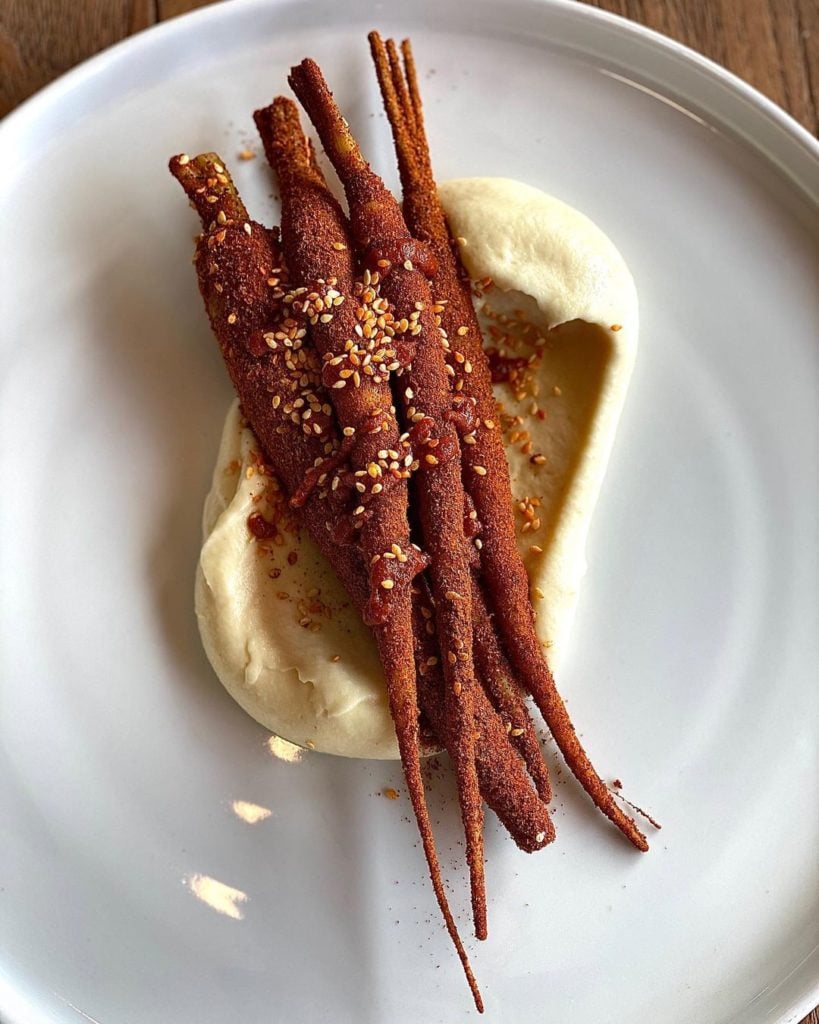
Do you feel competitive with other chefs?
“It’s taken me a long time to get where I am today, and I see a life coach and therapist. I used to be very competitive, and I wanted to be known as the best. But for me, that culture has died. I want to see everyone around me do well because if we all do well and offer something different, it makes the city’s food scene better. We don’t have enough chefs who’ve come together. I’ve enjoyed success and now want to share knowledge and help the next generation with sustainability. Everyone offers different perspectives and expertise and that is invaluable.”
How do you see restaurants operating in 2022?
“The to-go model will stay and I think ghost kitchens will be a massive thing. As far as striving for a Michelin Star, I don’t need that anymore. They have their place, but do I want that? No. Restaurants need to band together more. Here in Albuquerque, we’re partnering and collaborating with other restaurants to promote each other and events. Also, there’s much to be learned from the fast food model – it’s insanely efficient. If money was no object, I would open up a fast fine dining restaurant that offers healthy food sourced from local farms.”
What’s one of your favorite ingredients to cook with and why?
“I absolutely love sumac. Native Americans have been using it for a long time, and it grows in harsh places. Sumac has this lemony earthy taste you cannot get from anything else. It’s just awesome and packs a punch.”
What’s a technique or trick you learned in school or along the way that even home cooks could use?
“I used to hate microwaves and now it’s my favorite thing. I could pretty much cook everything in it, it’s insanely efficient. David Chang did an episode, ‘Debunking Microwave Myths,’ on his podcast, and I couldn’t agree more. It’s the most useful tool in the kitchen.”
What do you consider a chef’s role to be in a community?
“How can we be successful if our community isn’t? Success is what you’re doing in the community – success is what we as chefs are doing to reinvest in our community. It’s not the awards; our responsibility is to support local and pull together for our vendors. We’re responsible for our local environment – to make sure our kids have a place to eat and grow. I feel chefs also should promote mental health awareness – I’ve lost five friends over the past year, and we need to just normalize mental health.”
Favorite dish to cook for yourself?
“Red chicken – a recipe I developed during the quarantine. I buy gochujang and local chicken thighs – rub the paste all over the thighs in a bowl and let it sit overnight. The gochujang cures the chicken a little bit. The next day I throw them in a pan with butter and sear until they’re almost burnt. Fair warning, it makes an absolutely disgusting mess (laughs). Throw them in the oven at 350 for 15 minutes. The chicken thighs come out light red / orange with a beautiful dark and crispy top. You can eat them hot or cold, in soup, over rice, or in between a brioche bun.”
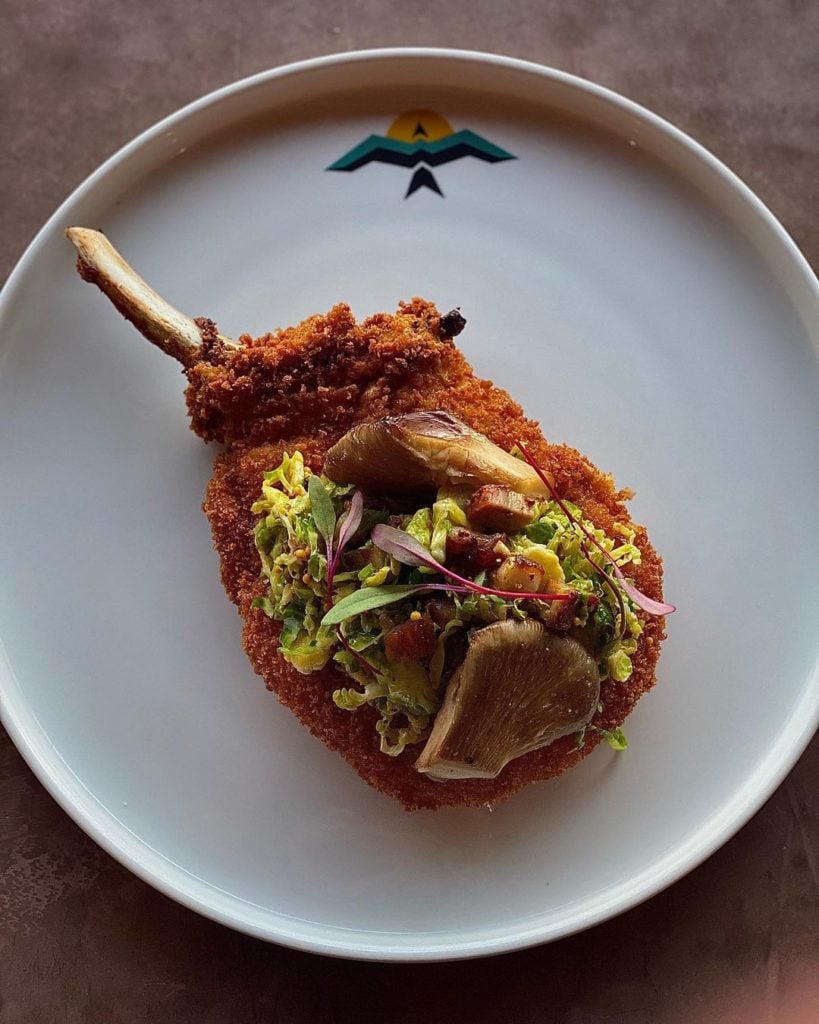
Favorite dish to cook for friends and family?
“Fried chicken sandwiches. I make homemade bread and butter pickles and use local Korean bbq seasonings. I brine chicken thighs in the pickle juice overnight. Then they sit in a 50/50 flour/bbq seasoning mix for about 12 hours. I add mustard and then fry the thighs.”
What’s a spice you consider under-valued?
“New Mexico red chile powder and again, sumac.”
What are your breakfast, lunch and dinner restaurant recs when in Albuquerque?
“For breakfast go to The Grove. It was in Breaking Bad and Chef Jason Greene makes incredible English muffins. Hit up Farina Pizzeria & Wine Bar for lunch – they source locally and it’s always packed, so lunch is a bit easier to get in. And for dinner – Los Poblanos’s Campo restaurant. They have an on-site organic farm where they source from there, and I think Executive Chef Jonathan Perno is the best chef in the city.”
Follow Chef David Ruiz on Instagram at @chefruiz and be sure to sample his fare next time you’re in the Albuquerque area.


